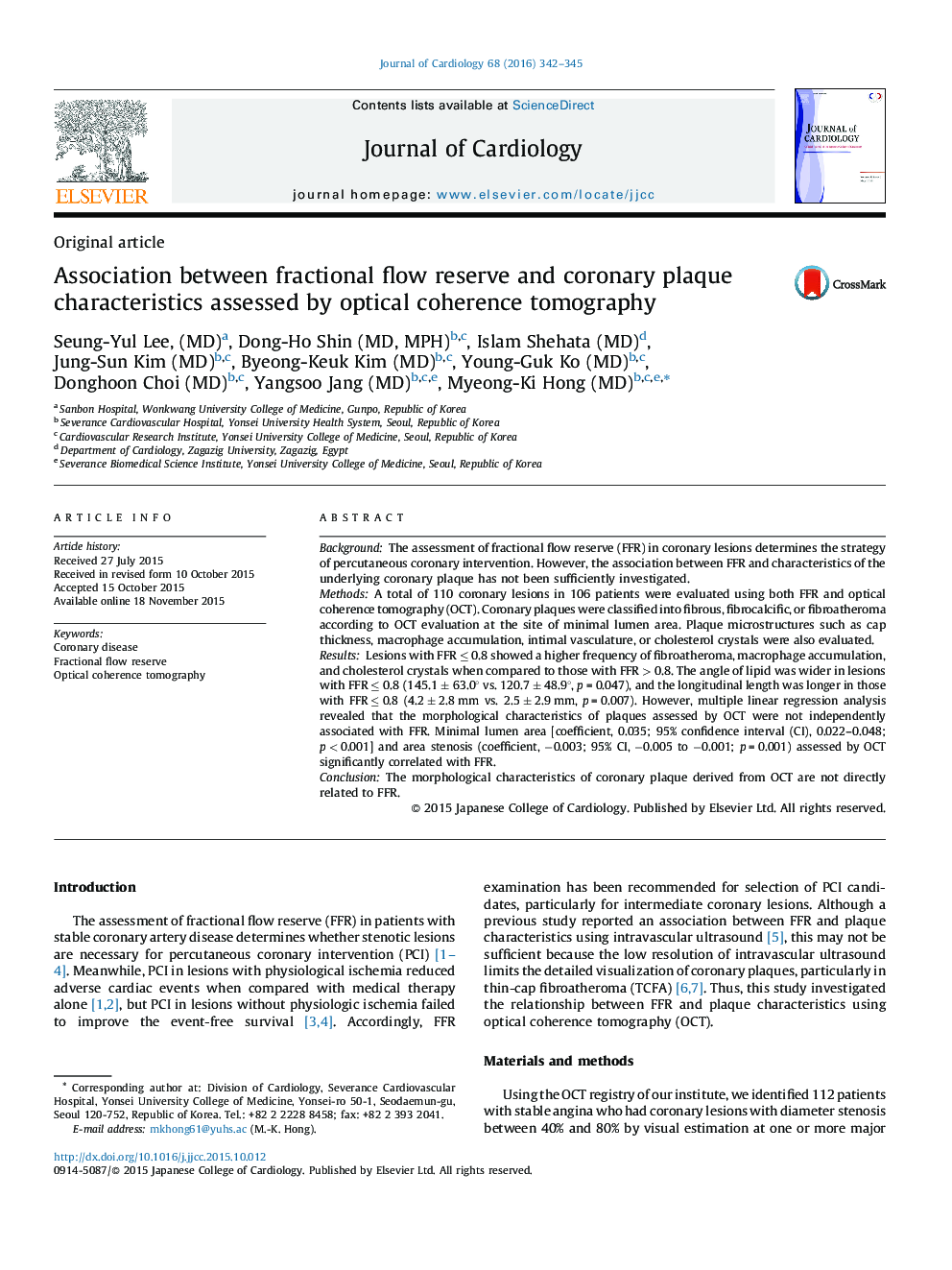| Article ID | Journal | Published Year | Pages | File Type |
|---|---|---|---|---|
| 2962694 | Journal of Cardiology | 2016 | 4 Pages |
BackgroundThe assessment of fractional flow reserve (FFR) in coronary lesions determines the strategy of percutaneous coronary intervention. However, the association between FFR and characteristics of the underlying coronary plaque has not been sufficiently investigated.MethodsA total of 110 coronary lesions in 106 patients were evaluated using both FFR and optical coherence tomography (OCT). Coronary plaques were classified into fibrous, fibrocalcific, or fibroatheroma according to OCT evaluation at the site of minimal lumen area. Plaque microstructures such as cap thickness, macrophage accumulation, intimal vasculature, or cholesterol crystals were also evaluated.ResultsLesions with FFR ≤ 0.8 showed a higher frequency of fibroatheroma, macrophage accumulation, and cholesterol crystals when compared to those with FFR > 0.8. The angle of lipid was wider in lesions with FFR ≤ 0.8 (145.1 ± 63.0° vs. 120.7 ± 48.9°, p = 0.047), and the longitudinal length was longer in those with FFR ≤ 0.8 (4.2 ± 2.8 mm vs. 2.5 ± 2.9 mm, p = 0.007). However, multiple linear regression analysis revealed that the morphological characteristics of plaques assessed by OCT were not independently associated with FFR. Minimal lumen area [coefficient, 0.035; 95% confidence interval (CI), 0.022–0.048; p < 0.001] and area stenosis (coefficient, −0.003; 95% CI, −0.005 to −0.001; p = 0.001) assessed by OCT significantly correlated with FFR.ConclusionThe morphological characteristics of coronary plaque derived from OCT are not directly related to FFR.
